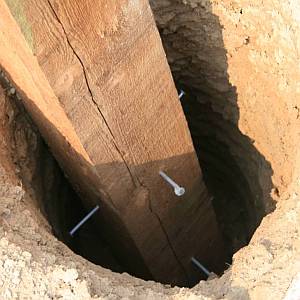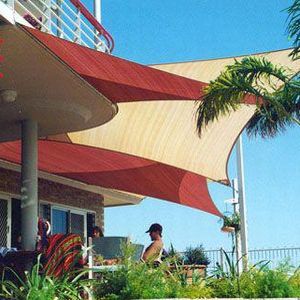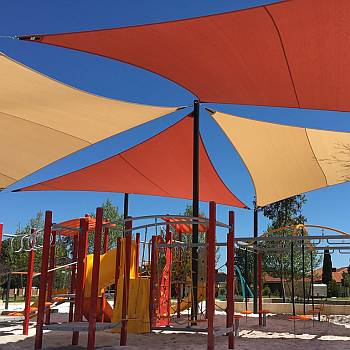
Shade Sails
Ready-to-Hang Sun Shade Sails, Commercial & Waterproof Sunbrella Shadesails
Discover the perfect blend of style and protection with our shade sails. Transform your patio, deck, pool, or garden into a chic oasis shielded from harsh UV and IR rays. Our collection boasts over 70 vibrant fabric colors crafted from durable materials like HDPE mesh and waterproof canvas. Whether you're hosting a gathering or enjoying a quiet afternoon, a shade sail promises to enhance your outdoor experience with both elegance and reliability.
What are Sun Shade Sails?
A Shade Sail is a flexible, fabric canopy typically made from durable, UV-resistant materials like high-density polyethylene (HDPE) to resist weather elements like rain, wind, and sun exposure. It's designed to be stretched and anchored between poles, walls, or other structures to create a shaded area usually outdoors. Shade sails come in various shapes: typically as triangles, squares, or rectangles, but can be custom made into most any multi sided polygon shape.
The main purpose of a shade sail is to provide protection from the sun's harmful ultraviolet (UV) rays while creating a comfortable, shade in a backyard garden or a commercial space. It's commonly used to:
- Block UV Radiation: Reduces sunburn risk and protects skin and eyes from long-term damage. Nearly eliminate the UV rays that heat you up and reduce its destructiveness to furniture fabrics and more.
- Cool Outdoor Areas: Lowers temperatures beneath the sail, making garden, patios, decks, pools, or playgrounds more enjoyable in hot weather.
- Enhances Appearance: Adds a stylish, modern touch to residential or playground spaces.
Shade sails are popular for their versatility, affordability, and ease of installation compared to permanent structures like gazebos, pavillions or pergolas. They're ideal for anyone looking to maximize outdoor living without sacrificing safety, comfort or their wallet.
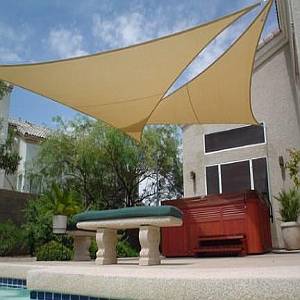
Ready Made Ships Quick
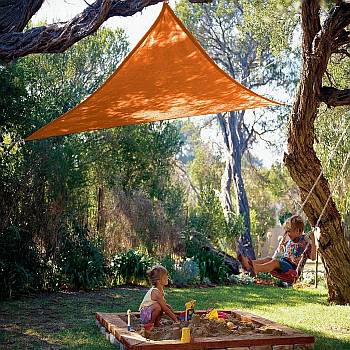
Temporary Use - Ships Quick
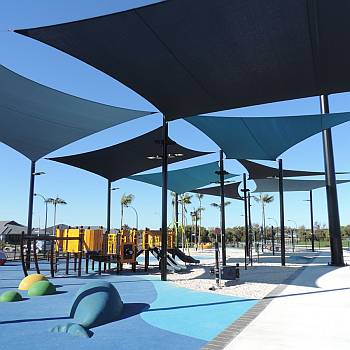
Made to Order - Many Sizes
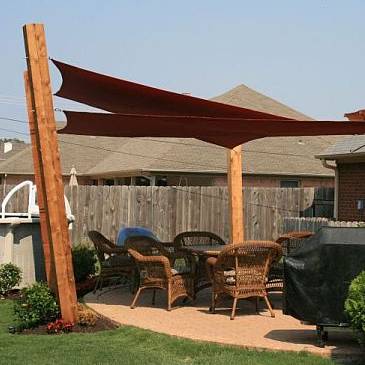
Made to Order - Water Resistant
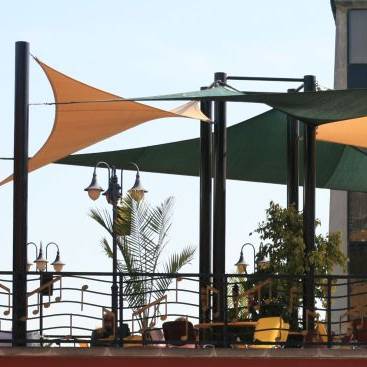
Near Any Size & Shape
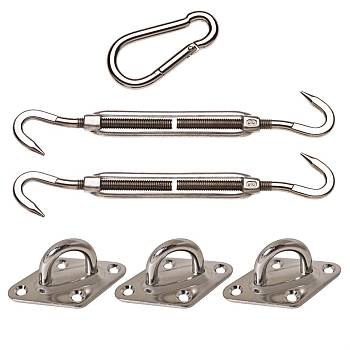
Sale Price: $34.95
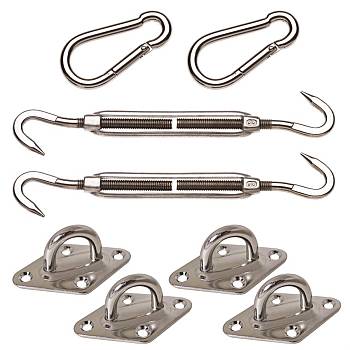
Sale Price: $44.95
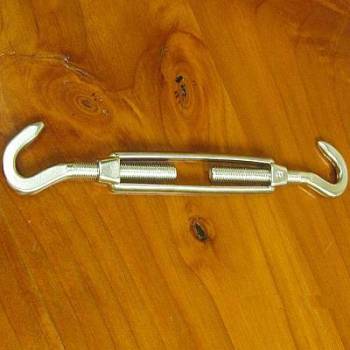
Sale Price: $17.95
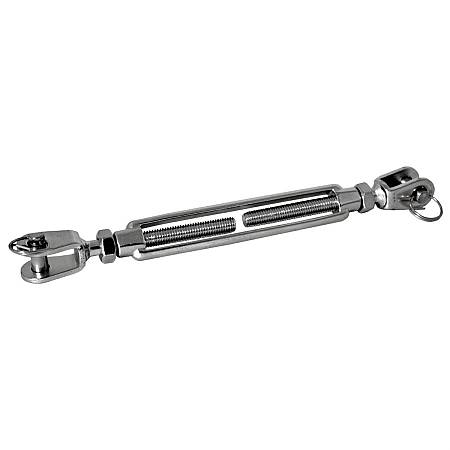
Sale Price: $19.95
Design Features of Quality Shade Sails
A shade sail is characterized by several distinct physical features that define its functionality and appearance:
- Fabric Material: Use high-quality, durable shade fabrics that are UV-stabilized like HDPE(high-density polyethylene) Commercial 95 (340gsm), Coolaroo (240gsm), or even Marine/Awning Grade Sunbrella (339gsm) fabrics is paramount to longevity. Weight of the fabric is usually measured in gsm, which stands for grams per square meter and is the standard unit used to measure the weight or density of fabric. (Pesky metric system) Generally the larger the gsm the heavier and usually tougher the fabric. Less than 200gsm is light weight and isnt suitable for long term shade sail use. 200-310gsm is Medium duty and averages 5-8 years. 300gsm or more is heavy weight usually last 8-12 years and suitable for most commercial uses.
- Shape: Commonly available in geometric shapes like a triangle, square, or rectangle, though custom shapes are also available. The area to be covered or the available mounting points often influences the size and shape of the sail. Mounting some corners high and other corners lower will also affect the shape and provide aesthetic appeal.
- Edges and Reinforcement: The perimeter is reinforced with strong webbing usually with metal D-rings or grommets at the corners for anchoring. Larger sails or local code in public or commercial sites may require a stainless steel cable in the perimeter. Use of proper edges will help transfer the wind loads to the corners without breaking.
- Inward Catenary Curves: Each side of the shade sail features a subtle, inward-curving design (resembling a shallow arc) rather than a straight line.
- Tensioning System: Attached to anchor points (e.g., pole, wall, structure, or tree) using ropes, turnbuckles, chains or cables, allowing the sail to be tightly stretched and secured.
- Wind Loads: Since everywhere in the USA is is possible to have wind gusts of up to 90 mph at least once a year, then a shade sail, when properly installed, should be able to handle at least that wind load. - All of ours are rated for 90 mph when secured & tensioned properly.
Why do a shade sails have curves on their sides?
The inward catenary curves on each side of a shade sail are not optional and are a deliberate design feature that serves both a functional and structural purposes:
- Even Tension Distribution: A catenary curve mimics the natural shape a flexible material takes when suspended under its own weight (like a hanging chain). By incorporating this curve, the sail distributes tension evenly across the fabric when tensioned between anchor points. Straight edges would concentrate stress at the corners, risking tears or sagging.
- Wind Resistance: The curved edges allow the sail to flex slightly under wind pressure, reducing the risk of damage. The inward curved design tightens the shade fabric preventing the wind from creating waves in the fabric that can potentially tear at the corner when the wave must abruptly come to a stop.
- Prevents Sagging: Without curves, the center of a straight-edged sail might droop over time due to gravity or uneven tension. The inward curves when under tension try to straighten out and this evenly pulls at the fabric keeping it taut and flat.
- Structural Integrity: The inward curved shape enhances the sail's ability to handle dynamic loads (e.g., wind, rain, or debris). It reduces flapping and stress points, prolonging the sail's lifespan and keeping it secure in various weather conditions.
In essence, the inward catenary curve on each side is a clever engineering solution that balances graceful chic beauty with practicality, ensuring the shade sail remains taut, stable, effective at providing shade, and resists unsightly wrinkles and sagging while enduring most of what Mother Nature can throw at it. This one design feature is why shade sails look sleek yet perform so reliably!
Ready-to-Hang Shade Sails offer Convenience, Style & Economy
We understand the importance of combining both functionality and style on a budget when it comes to outdoor shading solutions. That's why our Coolaroo ready-to-hang sun sails are designed to provide immediate comfort and aesthetic appeal to your outdoor space.
These shade sails are the perfect solution for transforming your patio, garden, pool, or any outdoor area into a comfortable and visually appealing oasis. They are pre-sized squares, rectangles and triangle shadesails, some with pre-attached ropes or stainless steel mounting hardware, ensuring a hassle-free installation that requires no complex assembly.
With stylish designs, pleasing colors and ease of installation, they offer protection from the sun's harmful UV rays, creating a comfortable environment for relaxation or entertaining. Additionally, they can enhance the artistry of any outdoor area. Utilizing one or more pre-made shade sails allow you to design an affordable shaded area quickly and effortlessly. These sails offer the convenience, versatility and economy you need to make it happen.
Custom Shade Sails Solutions for Larger or Unique Spaces
We offer custom shade sail solutions designed to meet your specific needs. With more than 20 years of making high quality and long lasting shadesails, our expert team will work closely with you to create a sail shade solution that's not only effective but also brings a touch of style and class to your outdoor area.
Whether you have a patio, garden, outdoor dining, or maybe an irregularly shaped or complex layouts, our custom sails can be tailored to fit perfectly. Available in HDPE mesh or near waterproof marine grade Sunbrella acrylic canvas, and over 100 possible colors, we can bring life to your designs to ensure a perfect match for your vision and style.
We understand that every outdoor space is unique. That's why we provide shade sails that are not just functional but also offer maximum sun protection while adding a touch of elegance to your area. Trust our team to help with your shade solutions that meet your specific requirements and enhance your outdoor shade needs.
Things to consider when choosing a shade sail
Commercial shade sails
are ideal for large areas like schools or cafes where maximum durability is needed.Custom shade sails
allow for tailored sizing and design to fit unique architectural features.Fabric shade sails
come in different weaves, so check breathability and UV resistance before choosing.Outdoor shade sails
should withstand weather changes, especially wind and rain exposure.Residential shade sails
are usually more cost-effective and geared toward home use with simpler installs.Sail
shape affects not only coverage but also how well it can be tensioned against wind forces.Sail installation
needs sturdy anchor points for long-term stability and safety.Sail shade
provides a cost-effective alternative to permanent roofing for outdoor areas.Sail shades
in triangle shapes offer sleek aesthetics but less total coverage.Sail structures
should be engineered to meet local wind load requirements and terrain.Sails
should be removed or protected in extreme weather to extend their lifespan.Shade
level can vary by fabric, so look for products that specify a UV block percentage.Shade fabric sails
made with HDPE allow airflow while still blocking harmful sun rays.Shade outdoor sails
enhance usability of open areas like gardens, patios, or parking spaces.Shade sail
quality is influenced by corner reinforcement and UV-stabilized thread stitching.Shade sail design
should include a pitch for water drainage and aesthetics.Shade sail variations
let you mix shapes and colors for a layered or architectural look.Shade sails
work well in playgrounds, courtyards, and pools to provide UV protection.Shade sails benefits
include lowering temperatures and shielding skin from sunburn.Shade sails for backyard
transform open lawns into cozy gathering areas with visual appeal.Shade sails for patio
help protect outdoor furniture and reduce heat near windows.Shade sails installation
should use stainless steel hardware to resist rust over time.Shade sails outdoor
are ideal for shading garden beds, playgrounds, or animal enclosures.Shade sails prices
depend on fabric type, size, customization, and hardware inclusion.Shade sails reviews
often highlight real-world performance in wind and long-term sun exposure.Shade sails types
range from waterproof PVC to breathable mesh, each with pros and cons.Shade sails variations
include freestanding, wall-mounted, or mixed installation methods.Shade structure sails
are commonly used in commercial outdoor eating or lounging zones.Sun shade sail
helps prevent sun glare in windowed areas or patios without trees.Sun shade sails
are best installed with angled pitch to block low-angle morning or afternoon sun.Commercial shade sails
typically have higher GSM ratings and reinforced webbing corners.Custom shade sails
allow you to specify color schemes to match your branding or home palette.Fabric shade sails
should be UV-tested to confirm real-world protection claims.Outdoor shade sails
can be temporarily removed for winter to prolong their usable life.Residential shade sails
are easier to install with basic DIY tools and pre-made kits.Sail
corners must be reinforced with double or triple stitching to prevent tearing under tension.Sail installation
requires you to calculate tension angles to avoid sagging and pooling.Sail shade
should be placed based on sun path calculations for optimal effectiveness.Sail shades
need to be tensioned tightly with turnbuckles or pulleys for long-term hold.Sail structures
made of steel tubing or concrete footings offer better wind resistance.Sails
should have rust-resistant D-rings to keep tension consistent and safe.Shade
should cover seating areas and doorways where people gather most often.Shade fabric sails
that are too tightly woven may trap heat, reducing airflow underneath.Shade outdoor sails
should be placed where there are few natural shade options like trees.Shade sail
orientation can improve heat reduction-angle it to catch afternoon sun.Shade sail design
can include overlapping layers for a dramatic, high-end look.Shade sail variations
allow for playful patterns, including alternating colors and angles.Shade sails
should be measured carefully to leave room for mounting and tensioning hardware and allow up to 5% fabric stretch.Shade sails benefits
extend beyond UV protection-they also define outdoor spaces.Shade sails for backyard
are often the easiest way to create an outdoor lounge or kitchen area.Shade sails for patio
can extend your living space with shelter from direct sun.Shade sails installation
should avoid tree mounting due to movement and instability.Shade sails outdoor
should use marine-grade materials for coastal or humid climates.Shade sails prices
increase with higher-quality materials and custom designs.Shade sails reviews
can point out common issues like sagging or discoloration.Shade sails types
may include retractable, waterproof, semi-permanent, or decorative.Shade sails variations
give you more ways to personalize or adjust coverage as needed.Shade structure sails
offer an open, breathable alternative to traditional hard roof systems.Sun shade sail
coverage should be placed based on sun's direction throughout the day.Sun shade sails
can block up to 98% of UV rays if made with high-density materials.Commercial shade sails
often meet fire-retardant codes required for public use.Custom shade sails
are perfect for branding or matching with corporate aesthetics.Fabric shade sails
fade less if treated with colorfast UV-resistant dyes.Outdoor shade sails
should be maintained yearly to check for hardware or fabric wear.Residential shade sails
come in a variety of soft colors to match garden landscapes.Sail
curve cutting reduces fabric flutter and evenly distributes stress across the surface.Sail installation
must allow for seasonal fabric stretch and re-tensioning.Sail shade
placement should take prevailing wind into account to prevent uplift.Sail shades
are ideal for small spaces where gazebos would be too bulky.Sail structures
require permits in some cities-check local regulations before installing.Sails
that are too large may collect rainwater and cause stretching if not angled properly.Shade
with overlapping sails can create artistic effects and varying levels of coverage.Shade fabric sails
in bright colors may reflect heat differently-neutral tones stay cooler.Shade outdoor sails
should not interfere with tree branches or gutters for long-term success.Shade sail
edge curves are critical to maintaining tension and avoiding sag.Shade sail design
should always account for height and drainage direction.Shade sail variations
make it easier to expand your shaded area in phases.Shade sails
in coastal regions should use corrosion-resistant fittings and anchors.Shade sails benefits
can include energy savings by cooling areas near doors and windows.Shade sails for backyard
create cozy reading or dining areas without permanent construction.Shade sails for patio
pair beautifully with pergolas or garden lighting setups.Shade sails installation
should be done with eye bolts and turnbuckles for adjustability.Shade sails outdoor
can add elegance and function to rooftop terraces or balconies.Shade sails prices
are influenced by seasonal demand-buying offseason can save money.Shade sails reviews
can help determine which brands hold up best in real weather conditions.Shade sails types
give flexibility to choose between temporary or permanent setups.Shade sails variations
can be mixed together to create a multi-level or floating canopy look.Shade structure sails
should be tensioned regularly to maintain their shape and coverage.Sun shade sail
materials with UV stabilizers ensure long-term performance under sunlight.Sun shade sails
provide comfort, protection, and style to all types of outdoor living spaces.
What to consider when taking care of and using your shade sails
- Regularly inspect
shade sails
for signs of wear, such as fraying edges or weakened stitching, to ensure they remain safe and functional. - Choose
custom shade sails
designed to fit your specific space to avoid improper tension or coverage issues. - Clean
fabric shade sails
with mild soap and water to prevent dirt buildup, which can degrade the material over time. - Ensure proper tension during
sail installation
to prevent sagging or excessive stress on anchor points. - Check the UV resistance of
outdoor shade sails
to confirm they provide adequate protection from harmful sun rays. - Remove
residential shade sails
during extreme weather, like high winds or heavy snow, to prevent damage. - Verify that anchor points for
commercial shade sails
are securely fastened to withstand heavy use in public spaces. - Use breathable materials for
shade sail
to allow air circulation and reduce heat buildup underneath. - Consider the aesthetic appeal of
sail shades
to complement your outdoor decor and enhance visual harmony. - Evaluate
shade sails prices
to balance cost with quality, ensuring long-term durability and value. - Inspect
sail structures
for rust or corrosion on metal components, especially in coastal areas. - Opt for waterproof
sails
if you need protection from rain in addition to shade. - Read
shade sails reviews
to choose reputable brands with proven performance and customer satisfaction. - Adjust the angle of
sun shade sails
to maximize shade coverage throughout the day as the sun moves. - Ensure
shade sails installation
is done by professionals to guarantee safety and structural integrity. - Consider
shade sails types
, such as triangular or rectangular, to best suit your space and needs. - Check the warranty of
shade outdoor sails
to ensure coverage for potential manufacturing defects. - Use
shade sails for patio
to create a comfortable outdoor living area protected from direct sunlight. - Assess the wind resistance of
shade fabric sails
to ensure they can handle local weather conditions. - Plan the layout of
shade sails for backyard
to cover high-traffic areas like seating or play zones. - Store
sail shade
in a dry, cool place during off-seasons to extend its lifespan. - Consider
shade sails benefits
, such as energy savings, by reducing the need for air conditioning in shaded areas. - Ensure
shade sail design
includes proper drainage to prevent water pooling during rain. - Explore
shade sails variations
to find unique shapes or colors that enhance your outdoor space. - Use
shade structure sails
in large venues to provide consistent shade for events or gatherings. - Check the fire resistance of
sails
if they’re used near fire pits or grills. - Monitor the tension of
shade sails outdoor
regularly to prevent stretching or tearing over time. - Choose
sun shade sail
materials with high denier ratings for increased durability and strength. - Ensure
sail
edges are reinforced with strong webbing to handle stress at attachment points. - Consider the environmental impact of
shade sails
by selecting eco-friendly or recyclable materials. - Plan
sail installation
with adequate clearance to avoid contact with trees or structures that could cause abrasions. - Use
custom shade sails
to cover irregularly shaped areas for a tailored fit and maximum coverage. - Inspect
fabric shade sails
for mold or mildew, especially in humid climates, and clean promptly. - Position
outdoor shade sails
to account for seasonal sun angles for year-round effectiveness. - Secure
residential shade sails
with high-quality hardware to prevent detachment during storms. - Evaluate the size of
commercial shade sails
to ensure they provide ample coverage for large crowds. - Choose
shade sail
colors that reflect heat, like lighter shades, to keep the area cooler. - Check
sail shades
for fading, as UV exposure can degrade color and material over time. - Compare
shade sails prices
across suppliers to find cost-effective options without sacrificing quality. - Read
shade sails reviews
to identify models with easy maintenance and long-lasting performance. - Select
shade sails types
based on whether you prioritize shade, rain protection, or aesthetics. - Ensure
shade outdoor sails
are installed at a slight angle to promote airflow and reduce heat buildup. - Use
shade sails for patio
to extend the usability of outdoor spaces during hot summer months. - Test the durability of
shade fabric sails
by checking their resistance to tearing or stretching. - Plan
shade sails for backyard
to avoid obstructing views or access to other outdoor features. - Store
sail shade
properly during winter to prevent damage from freezing temperatures or moisture. - Highlight
shade sails benefits
like UV protection to promote skin safety for users. - Incorporate
shade sail design
elements that allow for easy removal during maintenance or storms. - Explore
shade sails variations
to add layered or overlapping sails for dynamic shade patterns. - Use
shade structure sails
to create semi-permanent shade solutions for schools or parks. - Ensure
sails
are installed with turnbuckles for adjustable tension and easy maintenance. - Monitor
shade sails outdoor
for debris buildup, like leaves or branches, which can strain the fabric. - Choose a
sun shade sail
with a high shade factor for maximum UV protection in sunny climates. - Inspect
sail
attachment points regularly to ensure they remain secure and undamaged. - Consider the longevity of
shade sails
by selecting fabrics with proven resistance to weathering. - Plan
sail installation
to avoid overloading anchor points with excessive tension. - Use
custom shade sails
to create unique shade patterns that enhance outdoor aesthetics. - Clean
fabric shade sails
gently to avoid damaging the protective coating or stitching. - Position
outdoor shade sails
to minimize exposure to sharp objects that could puncture the fabric. - Secure
residential shade sails
with stainless steel hardware to resist corrosion in humid areas. - Size
commercial shade sails
appropriately to cover large areas like playgrounds or parking lots. - Select a
shade sail
with a high wind rating for areas prone to gusty conditions. - Check
sail shades
for proper tension after installation to ensure even load distribution. - Compare
shade sails prices
to find budget-friendly options for temporary or seasonal use. - Read
shade sails reviews
to avoid brands with frequent issues like premature fading or tearing. - Explore
shade sails types
like retractable sails for flexible shade control. - Install
shade outdoor sails
with enough height to allow for comfortable headroom underneath. - Use
shade sails for patio
to create a shaded retreat for outdoor dining or relaxation. - Ensure
shade fabric sails
are treated with UV inhibitors to maintain their protective qualities. - Design
shade sails for backyard
to complement existing landscaping or outdoor furniture. - Store
sail shade
in a breathable bag to prevent mold during long-term storage. - Emphasize
shade sails benefits
like reduced glare for more comfortable outdoor activities. - Consider
shade sail design
that allows for modular additions if shade needs change. - Experiment with
shade sails variations
like curved edges for a modern, sleek appearance. - Use
shade structure sails
to provide shade for outdoor classrooms or community spaces. - Ensure
sails
are installed with proper grounding to avoid static buildup in dry climates. - Check
shade sails outdoor
for signs of stretching, which can indicate overloading or improper tension. - Select a
sun shade sail
with reinforced corners to handle stress during windy conditions. - Inspect
sail
stitching for loose threads that could lead to larger tears over time. - Choose
shade sails
with a high shade percentage for areas requiring intense sun protection. - Plan
sail installation
with future maintenance in mind, ensuring easy access to attachment points. - Use
custom shade sails
to match specific color schemes or branding for commercial spaces. - Avoid harsh chemicals when cleaning
fabric shade sails
to preserve their protective coatings. - Position
outdoor shade sails
to avoid trapping heat, which can make shaded areas uncomfortable. - Secure
residential shade sails
with heavy-duty anchors to withstand unexpected weather changes. - Size
commercial shade sails
to accommodate large groups without compromising structural stability. - Choose a
shade sail
with a sleek design to enhance the visual appeal of your property. - Monitor
sail shades
for signs of UV degradation, such as brittleness or discoloration. - Compare
shade sails prices
to find durable options for long-term outdoor use. - Read
shade sails reviews
to ensure the product meets expectations for ease of installation. - Explore
shade sails types
like cantilevered sails for unique architectural appeal. - Install
shade outdoor sails
with proper spacing to avoid chafing between overlapping sails. - Use
shade sails for patio
to create a cozy, shaded nook for outdoor entertaining. - Ensure
shade fabric sails
are tightly woven to provide better shade and durability. - Design
shade sails for backyard
to integrate with existing structures like pergolas or decks. - Store
sail shade
away from rodents or pests that could chew through the fabric. - Highlight
shade sails benefits
like low maintenance compared to permanent shade structures. - Consider
shade sail design
that incorporates lighting for evening use of shaded areas. - Experiment with
shade sails variations
like multi-colored sails for a vibrant outdoor look.
List of entities closely related to Shade Sails.
- Shade sails enhance the comfort of
outdoor furniture
by providing shade and protection. - A
patio
is often shaded with sails to create a cool outdoor space. UV protection
is a primary benefit of shade sails, shielding from harmful rays.- Shade sails provide effective
sun protection
for outdoor areas in summer. - A
pergola
can be paired with shade sails for added style and shade. - Similar to a
canopy
, shade sails offer portable shade solutions. - Shade sails are commonly used over a
deck
for relaxation and entertainment. - In a
garden
, shade sails protect plants and people from excessive sunlight. - Many shade sails use
waterproof fabric
for sun and rain protection. - Secure
mounting hardware
is essential for shade sail installation. - Shade sails transform a
backyard
into a shaded oasis. - A
pool area
benefits from shade sails for sun safety and comfort. - An
awning
shares similarities with shade sails but is typically fixed. Sunbrella fabric
is a popular choice for durable shade sails.tension poles
help maintain the tautness of shade sails.- Shade sails can cover a
carport
to protect vehicles from the sun. - A
balcony
becomes more usable with shade sails for shade and privacy. - Shade sails enhance a
terrace
for comfortable outdoor living. shade cloth
is the material foundation of most shade sails.- Shade sails create a pleasant
outdoor dining
experience. - A
playground
is safer with shade sails to reduce sun exposure. - Shade sails add comfort to a
courtyard
for gatherings. - A
veranda
can be shaded with sails for a cozy outdoor space. - Similar to a
gazebo
, shade sails provide flexible shade structures. - Shade sails enhance a
porch
for shaded relaxation. - A
sunshade
is a broader category that includes shade sails. weather resistance
is a key feature of quality shade sails.polyester fabric
is often used for affordable shade sails.- Strong
anchor points
ensure shade sails stay secure in wind. - Shade sails promote
outdoor living
by making spaces comfortable. - A
picnic area
is more enjoyable under shade sails. Sailcloth is a traditional material for shade sails. UV-resistant fabric
extends the life of shade sails.- A
shade structure
like a sail provides versatile outdoor coverage. wind resistance
is critical for shade sail durability.- Shade sails are ideal for a
rooftop
to create usable space. cafe seating
benefits from shade sails for customer comfort.nylon fabric
is lightweight and used in some shade sails.stainless steel fittings
ensure corrosion-resistant installations.- Shade sails can act as a
privacy screen
in outdoor spaces. outdoor recreation
is enhanced with shaded areas from sails.- A
barbecue area
is more comfortable under shade sails. - A
tent
shares portable shade qualities with shade sails. - Shade sails reduce
sun exposure
for safer outdoor activities. fabric durability
is crucial for long-lasting shade sails.- An
installation kit
simplifies shade sail setup. - Shade sails are a popular
shade solution
for homes and businesses. - Shade sails enhance an
outdoor event
with shaded areas. heat reduction
is a major advantage of shade sails.custom design
allows shade sails to fit unique spaces.
Last Updated: 05/13/2025 07:07 PM - ID:1507


